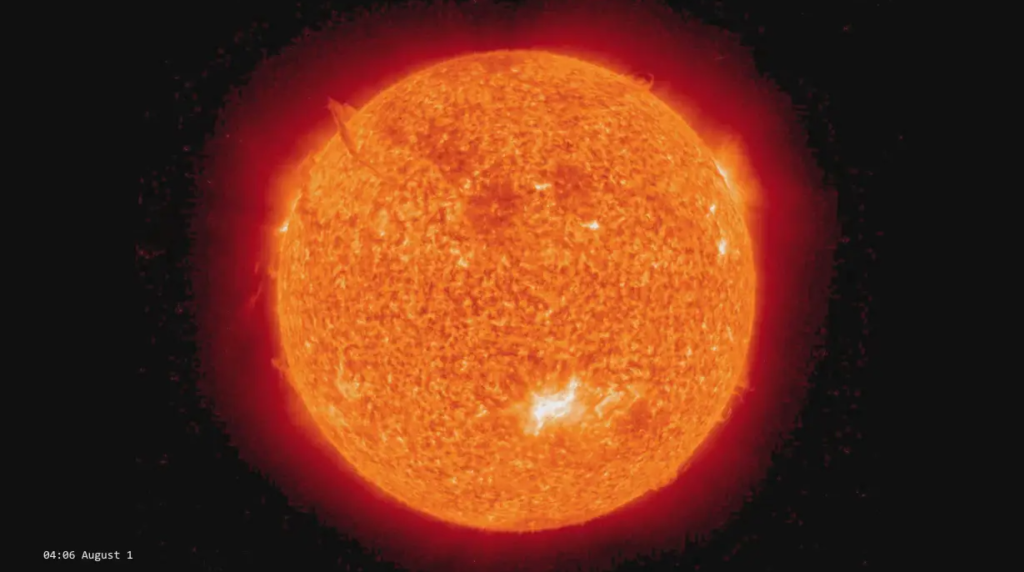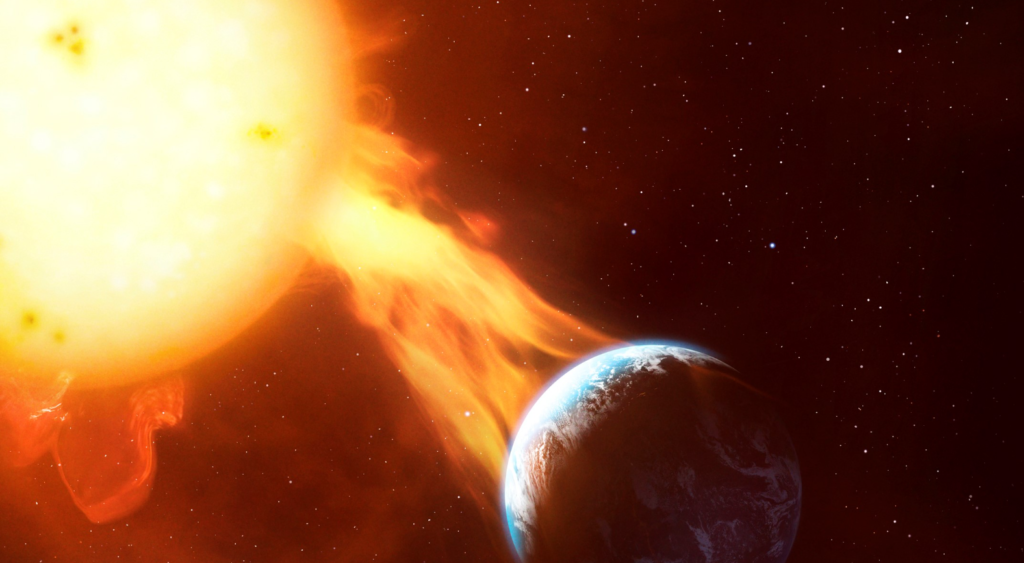
There is a possibility of Earth experiencing a strong solar storm this week, which could lead to radio disruptions and amazing northern lights.
Last month, the sun sent out very strong coronal mass ejections (CMEs) after twenty years, causing problems with communication all over the world. The sunspot that caused this has come back, sending a big flare towards Earth on Monday. The National Oceanic and Atmospheric Administration (NOAA) warned of a severe geomagnetic storm on May 11, as this sunspot sent many energized plasma streams towards Earth.
A solar or geomagnetic storm is a big disruption of Earth's magnetosphere, the region affected by the planet's magnetic field. The recent warning from NOAA was the first one since 2005, when Earth experienced its most intense radiation exposure in fifty years. The previous incident caused problems with GPS, power grids, farming tools, and satellites, and specialists are currently keeping an eye on Monday's flare for potential issues.

The sunspot, known as AR3664, has released 17 flares in the past week, and the strongest one has attracted worldwide interest. Michael Karrer, an amateur astronomer from Austria, expressed his astonishment at the explosion. He mentioned that in his 40 years of observing the sun, he had never witnessed such a massive and rapid eruption that extended so far into space.
Sunspot AR3664 is not currently facing Earth directly, but it is predicted to come into view by the end of the week. This could result in solar storms heading towards our planet. Although these storms are not expected to be as intense as the ones we experienced earlier this month, they could still cause a level three (R3) radio blackout. This blackout may last for a few minutes to a few hours and could impact GPS and radio communications.
GPS devices are at risk when solar flares interfere with Earth's magnetic field, causing disruptions in the ionosphere. This can result in signal interference and interruptions during geomagnetic storms.
Northern lights are expected in northeast Canada tonight, but there are no official forecasts yet. A sunspot produced solar flares on May 10 and may cause another strong geomagnetic storm as it reappears.
Earlier this month, a massive solar storm hit Earth, which was the biggest in two decades. This storm posed a threat to the power grids in the United States, potentially leading to blackouts across the nation. Fortunately, thanks to the preparedness of NOAA, the severe consequences were minimized. While there were no major impacts, a few farmers experienced a loss of GPS access, causing a temporary halt in their operations. Shawn Dahl, the service coordinator at NOAA, assured NPR that the power grid operators have been diligently working to maintain a steady and regulated flow of electricity without any disruptions.

Astronomers from around the globe have taken pictures of the sun releasing solar flares in the last 48 hours. The sightings were reported in Arizona, Virginia, Italy, and Chile. Experts are cautioning that these intense eruptions could lead to stronger solar flares in the coming year, possibly resulting in the most severe geomagnetic storm in over a century and a half.
In 2019, there were no visible sunspots on the sun. However, the U.S. National Space Weather Prediction Center predicts that there could be up to 115 sunspots by July 2025. Scientists are worried that a powerful solar flare similar to the 1859 Carrington Event could happen again. This event caused telegraph wires to catch fire, messed with ship compasses, and disrupted global communication. If a similar event were to occur today, it would have serious consequences because we heavily rely on technology. Important medical devices would stop working, and without cell phones, emergency services would be inaccessible.
In early 2022, a powerful geomagnetic storm caused a significant loss of over $50 million by destroying around 40 Starlink satellites through space collisions.













